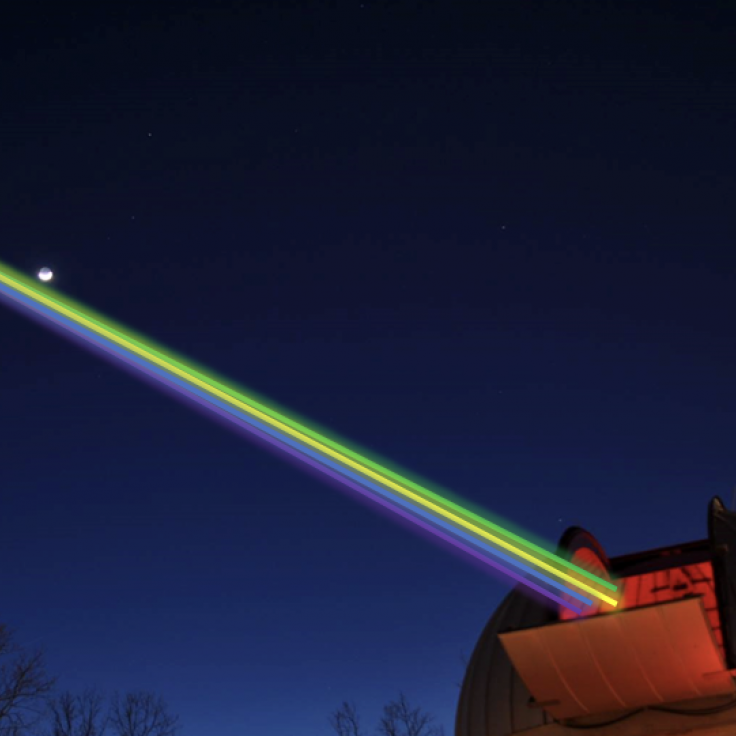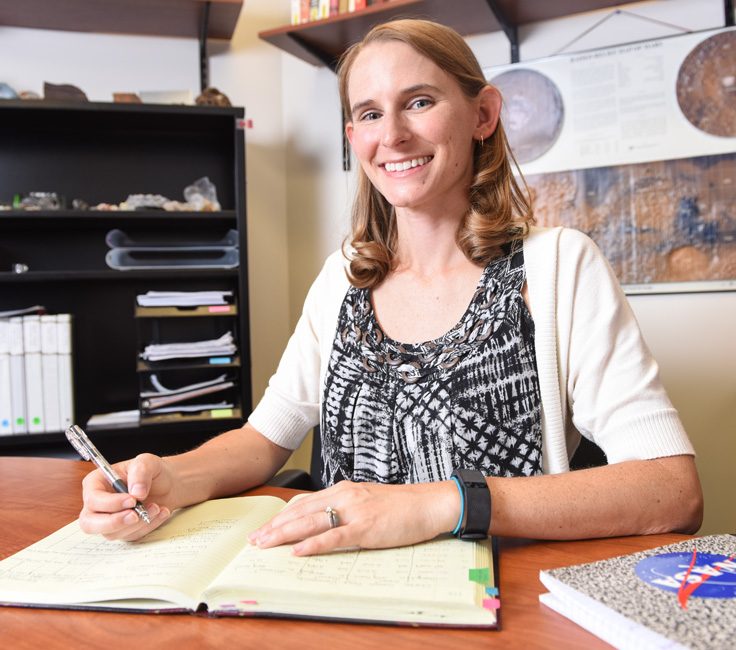Tag: Astronomy
Humanities play integral role in the UF Astraeus Space Institute
Imagination and curiosity meet critical analysis and scientific reasoning in the formation of the UF Astraeus Space Institute.
A generous gift propels space research
Private support elevates UF's stature in future NASA flagship missions.
UF alum, former NASA director leaves lasting legacy
The Oegerle Scholarship supports undergraduates showing exceptional promise in physics, astrophysics, or astronomy research.
Alumnae follow their passion in earth-bound space exploration
Meet two CLAS alumnae, Wendy Whitman Cobb and Sol Ortego who are pioneering new paths in the space industry.
Celebrate International Observe the Moon Night with CLAS
Join the Department of Astronomy in celebrating one of NASA’s largest annual events.
Newly-discovered star could provide new insights into the evolution of stars
Discovery of the most lithium-dense star in the Milky Way Galaxy challenges the current model of star evolution
UF joins NASA mission to launch artificial star into Earth’s orbit
The University of Florida announces its collaboration with nine other universities on the Landolt NASA Space Mission, a $19.5 million project to deploy an artificial "star" to aid astrophysical research.
Astrobiologist Amy Williams shows young women in STEM that the sky is the limit
Amy Williams, an astrobiologist and assistant geology professor at the University of Florida, conducts groundbreaking Mars research.
Young Earth-like planet with lava oceans spotted near the Big Dipper
Astronomers have discovered an extreme Earth-like planet that likely hosts lava oceans as it roasts next to its sun-like star near the Big Dipper constellation.
UF’s Rosemary Hill Observatory offers a rare view of the night sky
Far away from the light pollution of big cities, Rosemary Hill is the perfect place to stargaze for residents of North Central Florida.
Stars in Astronomy visible right here on campus
UF Astronomy propels discovery and soars to new heights.
UF astronomers illuminate dark region of Milky Way
Despite its potential for star formation, a perplexing dark region at the heart of our galaxy has remained oddly quiet. We finally have some insight into what's going on, thanks to a team of UF astronomers who are using observations from NASA's James Webb Space Telescope to unravel the mysteries.
UF astronomy student holds watch party for solar eclipse in Micanopy
Savannah Still partners with the nonprofit Cuscowilla Nature Retreat Center to host a solar eclipse watch party event.
Astronomers Reveal Feeding Frenzy in Stellar Nursery
A global research team makes a discovery that expands our understanding of star and planet formation.
Study Reveals Evidence of Diverse Organic Material on Mars
A new study, led by scientists including UF astrobiologist Amy Williams, presents compelling evidence for organic material on the Martian surface.
New Findings Illuminate the Origins of Black Hole Mergers
UF astrophysicist Jeffrey Andrews and collaborators are providing a clearer picture of the formation of black hole pairs.
UF Researchers Reveal the Hidden Hum of a Cosmic Symphony
After 15 years of data collection, scientists from the NANOGrav collaboration, including astrophysicist Laura Blecha and grad student Analis Evans, have detected evidence of gravitational waves at ultra-low frequencies.
One-third of Galaxy’s Most Common Planets Could be in Habitable Zone
Hundreds of millions of planets could have the right orbit to sport liquid water and possible life.
Celebrating a Record-Breaking Giving Day
The college received a record-breaking number of gifts from Gators all over the world on Giving Day 2023.
CLAS Researchers Named Scialog Fellows
UF researchers join Scialog's "Signatures of Life in the Universe," a collaboration that explores the possibilities of extraterrestrial life.



















